Lecture by the Chairman of the Department for External Church Relations of the Moscow Patriarchate Metropolitan Hilarion of Volokolamsk at the Universities of Winchester (5 February 2015) and Cambridge (6 February 2015).
Please click on the title for a recording of the talk:
Please click on the title for a recording of the talk:
Dear members of the faculty, students and guests of the university!
I have been asked to give a lecture on the topic of interaction between Christians today. Does ecumenism have a future? This question has become ever more relevant and demands an all-round analysis.
When Jesus Christ founded his Church on earth, it was a single community of disciples bound together by faith in him as God and Saviour. At the Last Supper Jesus prayed to his Father that his disciples may preserve unity in the fashion of the unity that exists between the Father and the Son: ‘That they all may be one; as thou, Father, art in me, and I in thee, that they also may be one in us: that the world may believe that thou hast sent me’ (Jn. 17: 21). He then gave to his disciples his body and blood in the form of bread and wine and commanded them: ‘Do this in remembrance of me” (Lk. 22: 1). After his death and resurrection it was the Eucharist – the re-enactment of the Last Supper with the prayer that the bread and wine become the body and blood of Christ – that became the most important unifying element of the Christian community.
From the time the first generation of Christians had appeared the community had begun to grow rapidly. The apostles’ preaching to the Jews was no less successful than that of Christ’s. Yet it was among the pagans that Christianity began to gain great popularity very quickly. St. Paul played an essential role in the expansion of the Church’s mission. It was he who, with characteristic passion and conviction, defended the idea of the universal nature of the Christian mission. It was he who also insisted that in the Church there is ‘neither Greek nor Jew, circumcision nor uncircumcision, Barbarian, Scythian, bond nor free: but Christ is all, and in all’ (Col. 3: 11). It is to St. Paul that we first find the comparison of the Church to a body: ‘So we, being many, are one body in Christ, and every one members one of another’ (Rom. 12: 5). The head of this universal body is Christ himself (Eph. 5: 23).
In being aware of herself as a single organism, the Church, from the very first days of her existence, knew the risks linked with the preservation of unity under earthly conditions. The Church was created as a projection of the eternal on the temporal, as ‘the kingdom of God coming with power’ (Mk. 9: 1). So the Church was perceived not simply as an association of people, as an earthly community like other communities and corporations. The Church was understood by Christians as that spiritual expanse in which they encounter God, in which they are united with God through the indissoluble bonds of love, at the same time being united with each other by the same bonds. The unity of Christians has a supernatural aspect, and therefore also requires special, supernatural endeavours for its preservation.
Photo: https://mospat.ru
From the earliest centuries people and communities fell away from the Church through disagreement with certain aspects of her teaching. These people were declared by the Church to be heretics and she rejected them. Sometimes they would found their own parallel churches and communities. However, in the majority of cases heresy, as a branch cut off from the trunk, died fairly quickly and the community of followers of a particular false teacher would fall apart and disappear.
Already in the early Church heresies would be classified according to how dangerous or not they were for the Church. Moreover, the word ‘schism’ entered the ecclesiastical lexicon, meaning the separation of a particular group of people from the fullness of the Church. Schisms could arise for various reasons – from personal arguments between hierarchs, from a particular local church community claiming the right to land of another community, and from arguments of a terminological nature on particular aspects of church doctrine. And while schisms arising on the grounds of heresy were treated severely and without compromise, those arising for other reasons would often be healed thanks to the diplomatic efforts of church hierarchs, and in some instances with the help of the secular authorities.
Church history knows of several great schisms that have divided the body of world Christianity into several ‘families of Churches’.
The first great schism arose in the fifth century at the Fourth Ecumenical Council in Chalcedon when the teaching of the presence in Jesus Christ of two natures – divine and human, with each possessing properties characteristic to each of them – was adopted. This teaching was not accepted by the Eastern Churches who were labeled ‘monophysites’ by their opponents. At present this family of Churches includes the Armenian, Ethiopian, Syro-Malabar, Syro-Malankara and Eritrean Churches that comprise tens of millions of people. These Churches are conventionally called the ‘pre-Chalcedon’ or ‘Oriental’ Churches, although they do not apply these labels to themselves.
The next great schism arose in the eleventh century for reasons not essentially dogmatic, but of an ecclesiastical-administrative nature. Its cause was the break in 1054 of communion between the Churches of Rome and Constantinople. The reasons behind this break of communion already existed; however, it was this that lead to the profound division between Christians of the West and the East. Constantinople was supported by the other Eastern Patriarchates of Alexandria, Antioch and Jerusalem, as well as by the Russian Church, which at that time was part of the Patriarchate of Constantinople. In time, serious theological differences were added to the ecclesiastical-administrative differences. Today the family of Orthodox Churches comprises around three hundred million believers, whereas the number of Roman Catholics comprises more than one billion.
Finally, the third great schism in the history of Christianity was the Reformation, the five hundredth anniversary of which will soon be marked. It began in 1517 when Martin Luther nailed to the doors of the Church in Wittenberg Ninety-Five Theses containing harsh criticism of various aspects of the teaching and practice of the Catholic Church. The Reformation led to the falling away from the Catholic Church of numerous church communities, to the radical re-interpretation by these communities of a whole number of fundamental aspects of Catholic doctrine and to the rejection of a number of dogmatic formulations. Soon after its appearance the Reformation divided all of Western Europe into two hostile camps. In 1534 the Reformation came to the British Isles when at the initiative of King Henry VIII the Church of England separated from the Catholic Church.
Photo: https://mospat.ru
The further development of the three church traditions – Orthodox (including the Oriental Churches), Catholic and Protestant (including the Anglican Church) proceeded in various directions. The Orthodox Church preserved the doctrine and church structure which she had inherited from the early centuries of Christianity and the Byzantine tradition of the first millennium. The Catholic Church also strove to preserve the positions of dogma and morality traditional for Western Christianity. The differences between the Orthodox and Catholics in the field of dogma are of less an important character as those between, for example, the Catholics and Protestants.
As regards Protestantism, its development has been characterized mainly by the breaking up of church communities into smaller parts, as well as by the creation of whole new directions on the grounds of Christianity. Contemporary Protestantism is such a multifaceted phenomenon that the very notion of Protestantism has a very conditional nature. Having renounced the concept of Church Tradition as the norm in the sphere of doctrine and morality and having proclaimed the principle of the sufficiency of Scripture for salvation, Protestantism embarked on the shaky ground of a free interpretation of the Scripture and early Christian practice. The original pathos of Protestantism consisted in the idea of a return to the early Church as reflected in the pages of the New Testament. Later the idea of ‘reformation’ precisely as reforming doctrinal and moral content was embraced by a greater number of Protestant communities.
The twentieth century was heralded by the appearance of the so called ‘ecumenical movement’, the original aim of which was the restoration of the unity lost among Christians. This movement became one of the most important phenomena in the history of Christianity in the twentieth century. The Church has always been aware that indifference to the issue of Christian unity or its rejection is a sin against the will of God. As far back as the fourth century St. Basil the Great said: ‘Those who labour in truth and sincerity for the Lord must endeavour to bring to unity those who have in many ways been divided among themselves’. From the moment when divisions appeared in the Christian world, efforts have been made to restore and strengthen unity. However, it is only in the twentieth century that the search for Christian unity has acquired a systematic approach and has been structured in the form of a number of organizations within the framework of which dialogue between various Christian confessions was developed on a constant and regular basis.
Assembly of the World Council of Churches, 1960. Photo: Greek Orthodox Archdiocese of America
One of these has been the World Council of Churches, set up soon after the end of the Second World War. In the years since its foundation, several generations of Christians belonging to religious communities once alienated from each other have discovered for themselves the faith and life of their brothers and sisters in Christ. Many of the prejudices regarding other Christian traditions were overcome, but at the same time what divides Christians has become ever more clear and understood.
Another important stage in the history of the ecumenical movement was the Second Vatican Council of the Roman Catholic Church (1962 to 1965) which opened up for the largest Christian confession in the world the way to dialogue with other Churches and communities on the principle of mutual respect. After the Council the Catholic Church entered into dialogue with the Orthodox and Oriental Churches. A separate important direction of inter-Christian activity of the Catholic Church was dialogue with the Anglican Church and various Protestant denominations. These dialogues continue to this day.
At present, inter-Christian dialogue has reached a phase when the question proposed to me as the topic of my lecture – ‘Does ecumenism have a future?’ – has acquired special relevance. It would seem that after many decades of dialogue one would expect a substantial coming together of positions. And yet this merging has not happened; as the restoration of unity among Christians as commanded by God has not happened. On the contrary, at the present moment the differences between, on the one hand, the Orthodox and the Catholics, and on the other differences within the Protestant world itself, have become more serious than they were fifty or seventy years ago when the ecumenical movement was only in its infancy.
Moreover, contemporary differences concern not only doctrinal issues, for the discussion of which there are special bilateral and multilateral commissions. Today the divergences touch upon the sphere of morality – the very sphere in which Christian witness may not necessarily depend upon doctrinal difference. What is the cause of these divergences and is there a possibility of overcoming them?
One of the important challenges which the whole Christian world has encountered over the past few decades is secularism. It has a long history going back to the time of the French Revolution. However, it is only in the twentieth century that secular consciousness has begun to dominate on all levels of western society. Its ideas, inextricably tied to the philosophy of materialism and atheism, have begun to capture the minds not only of philosophers but also of politicians. The rhetoric of many politicians and social figures is becoming all the more anti-Christian as they call for the complete expulsion of religion from public life and for the rejection of basic moral norms characteristic of all basic religious traditions.
Today secularism in Europe bears a militant character in that it denigrates religious holy objects and symbols. One of the main directions of this activity at present is the systematic destruction of the traditional understanding of marriage and the family. This is borne out by the contemporary phenomenon of equating homosexual unions with traditional marriage, by the aggressive propaganda of this type of relationship and by the granting to same-sex couples the right to adopt and bring up children.
The attitude towards the notion of human life as an unassailable value has also changed. Euthanasia is legal in a number of countries, and the voluntary exit from life for medical reasons is also under consideration for infants. Abortion – the mortification of children in the mother’s womb – has long been the norm and legal. The way of life propagated among the young: the cult of consumption, moral chaos, sexual permissiveness and a false understanding of freedom are justified by the fact that each human person supposedly has the right to personal happiness.
From the perspective of biblical teaching all of this testifies to the profound spiritual crisis in contemporary civilization. The concepts of good and evil are becoming ever vaguer in societies which until recently viewed themselves as Christian. The human person becomes disorientated in relation to the external world and defenseless when confronted with his own passions. The rights of individuals are placed higher than the interests of the majority of the population, leading to a growth in social tension.
What should be the answer of the Christian Churches to these challenges? It is obvious that it should be based on Divine Revelation alone as has been handed down to us in the Bible. Scripture is the common foundation which unites all Christian confessions, including Catholics, Orthodox and Protestants. We may take substantially different approaches in interpreting Scripture, but we have one Bible, and its moral teaching is quite clear.
At the same time we see how certain Christian Churches prefer to be guided by other criteria in their approach to moral issues. Not theological, but social and even political imperatives are having an influence on moral doctrine, which itself is becoming increasingly remote from that which we find in the pages of the New Testament, in Christ’s ministry and the epistles of St. Paul.
It is now becoming more difficult to speak of a single system of spiritual and moral values accepted by all Christians. Today there are various versions of Christianity voiced by different communities. From this perspective all modern-day Christians may be divided into two groups, the traditional and the liberal. And an entire gulf divides not so much Orthodox and Catholics or Catholics and Protestants, as the ‘traditionalists’ and ‘liberals’. Some Christian leaders assert that the Church ought to be ‘inclusive’ enough to recognize alternative behavioral standards and officially bless them. Traditionalists, in their turn, accuse liberals of rejecting the fundamental common Christian norms and of watering down the very foundation of Christian moral teaching.
The Orthodox Church believes that in this instance we are dealing not with an outdated ‘traditionalism’, but with fidelity to divine revelation contained in Scripture, and therefore with the authenticity of Christianity’s good news. And if so called liberal Christians reject the traditional understanding of moral norms, this means that we are confronted with a most serious problem: it turns out that we are divided not only by issues which, from the perspective of the external world, bear a ‘technical’ character and relate exclusively to the internal Christian dialogue. Currently we are divided in the very essence of that witness which we are called upon to bear to the external world. We no longer speak with a single voice, we no longer preach a single moral teaching, we are no longer capable of a consolidated, joint vindication of the moral principles upon which the life of Christian communities has been built over the centuries.
All of these problems have been reflected in the mutual relations between the Orthodox Church and the Anglican communion. I would like to devote the second part of my lecture to the topic of these mutual relations.
By the sixteenth century, when the Anglican Church arose as an independent tradition that had fallen away from Catholicism, Anglican theologians turned their attention to the doctrine and practice of the Orthodox Church. Over the past centuries our mutual relations have developed under the banner of striving to bring the two Churches together, while the initiator of negotiations in the majority of cases has been the Anglicans. As to how serious were the intentions and assured the approach to the cause of achieving unity can the gauged by the fact that the so called Oxford Movement, which existed in the 1830s with the aim of returning to the traditions of the ancient undivided Church, encouraged many Anglicans to study Orthodoxy seriously.
Up until the end of the twentieth century throughout numerous contacts we were one in that the main condition for the unification of the two Churches was to be agreement in the sphere of doctrine. Both Churches participated in epochal events in the life of each other.
07182014p01ph
Photo:
The dialogue between the Orthodox Church and the Anglican communion began to experience serious difficulties from the second half of the twentieth century with the decision by the Episcopalian Church of the USA in 1976 to allow the ordination of women to the priesthood. At the session of the International Commission for Anglican-Orthodox Theological Dialogue in 1978 in Athens the Orthodox side declared that meaningful dialogue with the goal of achieving Christian unity was under threat if women’s ordinations were to continue. Nevertheless, at the end of the 1980s the Episcopalian Church of the USA began the practice of ordaining women as bishops, once more underlining the divergences in views of our Churches on the issue of apostolic succession.
In 1993 the decision of the priestly ordination of women was taken by the General Synod of the Church of England. After the introduction of women priests there then followed discussions on the introduction of a female episcopate. At present, these discussions, which have divided the Anglican communion, may be considered to be over. Only a few days ago the first female bishop was consecrated in the Church of England. Many perceived this to be a significant achievement, while others regarded the event as cause for great disenchantment. It has had a negative effect not only on the ecumenical contacts of the Church of England but also on the situation within the Anglican communion, many members of which remain firm adherents to Christian tradition in the sphere of morality and the teaching on the Church.
Women-bishop-positions
I remember well the heated discussions on the issue of the elevation of women to the dignity of bishop at the last Lambeth Conference. I was present at the conference as an Orthodox observer and had the opportunity to talk to many Anglican bishops and to participate in heated discussions on the topic. At one such discussion I was asked: ‘Is there, from the point of view of the Orthodox Church, a principle difference between the female priesthood and the female episcopate? After all, you did not abandon dialogue with the Anglican Church after the decision on female priesthood, why then are you worried about the possibility of a female episcopate?’ Until then I had never thought about the question of the difference between the two things, but as I was asked the question directly I had to come up with some answer on the spot.
It is true, I replied, that we did not cease dialogue with the Anglican Church after the introduction of women priests, but not because we were in agreement with this. The issue is that even then we did not recognize the legitimacy of the Anglican hierarchy. However, for more than a hundred years discussions had been held between Anglicans and Orthodox regarding the possible recognition by the latter of the Anglican hierarchy. Now that possibility, even theoretically, has been removed. Why? Because hitherto we viewed the ordination of women to the priesthood as erroneous actions of individual bishops. Now women have been given the right to become bishops. For us this signifies a very simple fact – discussion on the recognition of the Anglican hierarchy is closed.
From our perspective the decision by the General Synod of the Church of England to allow women to be ordained bishops has come about not as a theological or ecclesiastical-practical necessity, but by the determination to follow secular notions of equality of the sexes in all areas of life. This in turn is tied to the fact that women now have more elevated roles in British society. In other words, the female episcopate, like the female priesthood, is a result of the successes of the feminist movement, which arose and developed in a secular environment, and was not the result of the natural development of Christian teaching and ecclesiastical order. Of course, our Anglican opponents will try to tell us the opposite. They claim that, on the contrary, the introduction of the female episcopate has been dictated by the interests of the Church.
We could in the final run renounce all arguments on female priesthood and episcopate or transfer these arguments solely to the sphere of internal dialogue within the framework of the corresponding theological commissions. However, there are other processes at work in the Churches of the Anglican communion which cause great alarm and disappointment in the Orthodox milieu. And not only for the Orthodox: the Anglican communion itself has now become divided as a result of these processes.
We mean, in particular, the recognition of same-sex unions as marriage – recognition not only by secular legislation but also by a number of Anglican communities. Recognition of these unions is deemed to be not only a permissible way of life but also something normal and laudable and never a hindrance to receiving not only priestly but also episcopal ordination, as deserving of the approval and blessing of the Church.
In 2003 the open homosexual Gene Robinson was elevated to the rank of bishop in the Episcopalian Church of the USA, and in 2010 in Los Angeles the episcopal see was occupied by a woman cohabiting openly in a same-sex relationship. In 2009 the General Convention of the Episcopalian Church took a decision obliging the ordination of homosexuals, and in 2012 adopted an official liturgical text for the blessing of ‘same-sex marriages’ with a peculiar title – The Witnessing and Blessing of a Lifelong Covenant. It is impossible to reconcile such decisions with the commandments of Scripture and traditional Christian morality. The Orthodox Church has condemned the aforementioned innovations as apostasy from the norms of the apostolic faith and church order as fixed by the Gospel and Church Tradition.
In September 2010 I was invited by the Archbishop of Canterbury, Rowan Williams, to give a speech at the traditional dinner of the Nicaea Club. I disregarded the rules of etiquette by deciding to use that opportunity to outline, in the presence of the most senior hierarchs of the Church of England, those issues in the modern-day practice of many Anglican Churches which the Orthodox Church is not in agreement with, and those dangers that this practice poses for inter-Christian dialogue. It would appear that I spoiled the appetite of many of the diners who did not expect such a present for dessert! On the other hand, many of those present came up to me after the dinner in order to express their solidarity and agreement. The same occurred a few years earlier at the Lambeth Conference when, after my presentation, I was approached by Anglican bishops who disagreed with the liberal course of their leadership.
Justin Welby The election in March 2013 of Justin Welby, who spoke of his adherence to traditional moral norms, as Archbishop of Canterbury gave us cause for hope. To my question on what he thought of same-sex unions that I put to him on the occasion of his enthronement, the Archbishop replied: ‘The position of the Church on the issue of marriage is quite unambiguous. It is fixed in our canons, and recently we affirmed that marriage is a life-long union between a man and a woman. We cannot recognize other unions apart from marriage, but we, as the Saviour in his grace and mercy, carry out our mission among people in their weaknesses. However, my personal conviction is unchanged: marriage is a life-long union between a man and a woman’.
We value the consistent policy of the Church of England and the personal position of Archbishop Welby, who has repeatedly spoken out (including in the House of Lords) against the law which grants equal status of same-sex unions with traditional marriage, as well as against their being blessed by the Church. However, as we know, the law in question was passed by the parliament last year. Even earlier, in 2012, the House of Bishops of the Church of England set up a working group researching human sexuality with the goal of combating ‘homophobia’. The result of this group’s work was the so called Pilling Report which called for tolerance towards representatives of sexual minorities within the Church, including those who are in priestly orders. In January 2014 the College of the House of Bishops set forth a declaration on the Pilling Report and approved its content, but emphasized that the document bore a recommendatory nature.
I would like to emphasize that the Orthodox Church is not against tolerance in relation to people of a non-traditional sexual orientation. There are such people among Orthodox believers. We work pastorally with them, as with other categories of the faithful, without subjecting them to ostracization, mockery or insult. But in this, as in other cases, we categorically refuse to recognize sin as the norm and to declare sinful behaviour as laudable. We view all sin as an illness which requires healing.
I would also like to emphasise that the future of the Church of England and the possibilities of her ecumenical contacts depend in many ways on the subsequent development of events in this area. The Orthodox Church remains loyal to dialogue with the Church of England which may now develop no longer in a theological key but in the area of interaction on practical issues. One would like to hope that insuperable obstacles will not be erected on the path of this dialogue.
The Orthodox Church remains open to co-operation with those representatives of the Anglican and Protestant world who retain fidelity to Gospel teaching. By way of example I can point to the recent increased activity between the Russian Orthodox Church and southern Baptists and Evangelicals of the USA. The delegation that I headed at the beginning of November 2014 took part in the Russian-American Forum of Christian Leaders organized at the initiative of the Evangelical Association of Billy Graham in the city of Charlotte in South Carolina. We discussed issues of morality upon which our positions coincide and agreed upon a number of projects on co-operation in the humanitarian sphere.
Apart from theological dialogue, the Orthodox Church continues to develop co-operation with Protestant denominations in such spheres as aid to the poor, the defense of Christians who have endured great difficulties in various parts of the world, the preservation of Christian heritage, and the enactment of charity and educational projects. In continuing our mutual relations with the Protestant confessions we are not attempting to smooth over or pass over in silence the differences which exist between us that cast doubt upon the real possibility of coming together, but on the contrary we are trying to overcome them honestly and openly.
From my point of view the most promising dialogue today is between the Orthodox and Roman Catholic Church. Like the Orthodox Church, the Catholic Church has never thought of herself as separate from Tradition, she aims to teach and live in accordance with the tradition that has been handed down to us through the ages. The significant improvement in relations between our Churches seen in recent years is tied to a greater realization that we are united by a common heritage, thanks to which both Orthodox and Catholics can and must bear witness together to the world to the never changing values of the Gospel of Christ.
The thirteenth meeting of the Joint International Commission for Theological Dialogue between the Orthodox Church and the Roman Catholic Church, Amman, Jordan, 2014.
I will not speak in this lecture of the doctrinal differences between the Orthodox and Catholics, nor of the work of the Joint Commission for Theological Dialogue between the Roman Catholic Church and the Orthodox Churches. I would like to say that today the Orthodox and Catholics encounter the same challenges which the modern age has thrown down to the traditional way of life. In this instance we are dealing not with theological issues but with the present and future of the human community. This is precisely the area in which we can interact without harm to our ecclesiastical identity. In other words, in not being one Church, in remaining divided by various theological and ecclesiological issues, it is possible for us to find ways of interaction which allow us to answer jointly the challenges of the modern-day world.
I would call this form of interaction a ‘strategic alliance’ between the Orthodox and Catholic Churches, although the word ‘alliance’ may appear to some to be too strong as it is reminiscent of military rhetoric. I am concerned not by the term but by the content. We are not speaking of some form of structural unification which is impossible at the present time but of how, in preserving independent and self-sufficient administrative structures, we can learn how to act as allies in relation to the external world. I believe deeply that this relationship as allies is essential for us both.
It is essential in particular for joint actions in the defense of Christians from discrimination, oppression and violence, to which they are subjected throughout many countries, primarily in the Middle East and North Africa. The events of the so called ‘Arab Spring’ have led to a sharp escalation of violence towards Christians. Militants belonging to radical groups have initiated against Christians a full-scale, deliberately intentioned genocide. In the territories that they hold, extremists are aiming to wipe out totally all traces of a Christian presence. Christians are being killed simply for being Christians, no matter what their confessional allegiance. Christian women are being raped, children are being kidnapped, and ancient Christian churches and monasteries are being destroyed.
In 2003 in Iraq there began a wave of cruel murders, acts of terrorism, kidnappings and violence which provoked the mass exodus of Christians from that country. In the summer of 2014 militants from the so called Islamic State began with renewed strength, to destroy Christianity in the areas of northern Iraq that they had captured where the majority of believers belong to the Chalcedonian and Syro-Catholic Churches. As a result Christians were forced to abandon en masse the land of their forefathers – their numbers in Iraq have been reduced from one and a half million to less than two hundred thousand, half of whom are today living with their children in refugee camps. The situation that has arisen in these camps may qualify as a humanitarian disaster. During the cold winter in the refugee camps of Iraqi Kurdistan dozens of children died from hyperthermia.
In Syria Christians are suffering greatly. Brutal revenge in this country is also exacted upon them. In the four years of the conflict lasting up to this day more than a hundred Christian churches have been destroyed and thousands of believers have been killed. More than a quarter of the Christian population has abandoned Syria. Extremists have in effect totally destroyed the unique Christian city of Maaloula.
In this way we are witnesses to a deliberately intentioned annihilation of Christianity in the ancient biblical lands. This shameful situation demands from Christians decisive and positive actions to defend their suffering brothers and sisters.
Unfortunately, we may speak not only of countries where Christians comprise the minority but also of countries with ancient and deep Christian traditions. Some Western European countries are trying to limit the manifestation of the Christian faith in public life with reference to the argument that they are aiming to observe the rights of adherents of other religions or of atheists.
One of the most scandalous cases was the dismissal of British Airways employee Nadia Eweida for wearing a cross at work. This Christian woman had to endure more than six years of appearing in various courts until the European Court of Human Rights finally upheld her rights. This case is far from unique. In 2012, a Heathrow Airport employee, Nohad Halawi, tried to fight the discrimination shown to her by her Muslim colleagues, who made a complaint and had her dismissed, even though she had worked at the airport for thirteen years. The British Court of Appeal supported the Muslims in October 2014 when it upheld the decision to dismiss the Christian woman.
The widespread manifestation of discrimination towards Christians was eventually taken up by members of the European Parliament. On 29 January 2015 the Parliamentary Assembly of the Council of Europe for the first time adopted a resolution accenting the discrimination of Christians in Europe. Earlier the problem of the discrimination of Christians in Europe was passed over in silence at the official level. For the first time the PACE indicated that it was wrong to offend the religious feelings of Christians and spoke of the infraction of their right to confess their faith openly.
The situation that has arisen requires from Orthodox and Catholics joint action in the defense of the Christian identity of Europe and the vindication of the Christian tradition of European culture. This alliance, aimed at the protection of Christian values in Western countries, at the defense of Christians from persecution in the Middle East and North Africa, may be joined by those representatives of the Anglican and Protestant world who are not indifferent to the situation which their persecuted brothers and sisters find themselves in. We might endure a fiasco on the grounds of theological dialogue but we will be able to achieve success in the sphere of practical interaction. One would like to believe in our ability to overcome our internal differences, to act together upon those issues, the resolution of which depends the present and future of Christianity.
So, is there a future for ecumenism? I would prefer to leave the question open. Let Christians ask this question of themselves more often by recalling the great responsibility entrusted to them by Christ. The task of restoring unity will always be the goal to which Churches and communities ought to strive. At the same time, however, we must remember that the attainment of unity is possible not by rejecting the fundamental norms of Christian morality, not by attempts to accommodate oneself to social currents and an ever changing social establishment, but is possible only on the foundation of the divinely revealed truth reflected in the pages of the Bible. We have no other teaching, nor can there be any other, ‘for other foundation can no man lay than that is laid, which is Jesus Christ’ (1 Cor. 3: 11)
Source: http://www.pravmir.com/future-ecumenism/#ixzz3UNJ1eB6H
I am hoping that Patriarch Kirill and Metropolitan Hilarion are simply trying to stall things so that a doctrinal agreement will not be arrived at before we come to love one another. Such agreement, without the context of ecclesial love, it could be argued, would be worse than useless because it would lead to further splits among the faithful. Such stalling tactics have been used before. I suspect Pope Benedict used a Vatican I reading of papal authority to block a further advance down the road to episcopal collegiality when he thought the time wasn't right - at least that is a possible interpretation of his actions. "You must remember, Father David," said a somewhat cynical Russian Orthodox archimandrite of Welsh descent, "that the Orthodox are Easterners and nor Westerners; and "Yes" does not mean "Yes", and "No" does not mean "No". "Yes" means that we shall agree for the moment, but will do our level best to see it does not happen; and "No" means the price isn't high enough." He was joking, but I hope that there is some truth in it. Otherwise, reunion will be more difficult, and the Orthodox world will have the continued prospect of patriarchs jostling each other for power and influence, just like worldly leaders.
In the Ravenna document of 2007 we recognised that the primacy is necessary and is deeply rooted in the Church’s canonical tradition. This is not just for human “organisation” reasons. It must always be seen in the context of synodality. The Church is always a synod and in the synod there is always a protos, a number one, a primate. This does not mean a penetration of secular thought on democracy or the monarchy into the Church. Only theology. It derives from the faith in our Holy Trinity. Ever since the very beginning, Church tradition has had canons which state the following: in the Church there is never a Primus without the Synod and there is never a Synod without the Primus. Harmony between the Primus and the Synod is a gift of the Holy Spirit. This has been our ecclesiology right from the start.”he Patriarchate of Moscow rejected the conclusions of the Ravenna document you mentioned. Did you read the Russian Church’s pronouncement?
“Yes I did read it. I speak for myself and on behalf of the ecumenical Patriarchate when I say that we do not agree with that document. It claims that the primacy exists and has theological grounding at the local and regional Church level but not on a universal level. We know what the real reason for this is: they want to deny that after the schism in the Orthodox Church too the ecumenical Patriarchate exercised universal primacy. In order to achieve this, they reject the possibility of recognising the Pope’s role as universal primate in a way that is acceptable to the Orthodox Churches as well. (Metropolitan John Zizioulas of Pergamon)
I am hoping that Patriarch Kirill and Metropolitan Hilarion are simply trying to stall things so that a doctrinal agreement will not be arrived at before we come to love one another. Such agreement, without the context of ecclesial love, it could be argued, would be worse than useless because it would lead to further splits among the faithful. Such stalling tactics have been used before. I suspect Pope Benedict used a Vatican I reading of papal authority to block a further advance down the road to episcopal collegiality when he thought the time wasn't right - at least that is a possible interpretation of his actions. "You must remember, Father David," said a somewhat cynical Russian Orthodox archimandrite of Welsh descent, "that the Orthodox are Easterners and nor Westerners; and "Yes" does not mean "Yes", and "No" does not mean "No". "Yes" means that we shall agree for the moment, but will do our level best to see it does not happen; and "No" means the price isn't high enough." He was joking, but I hope that there is some truth in it. Otherwise, reunion will be more difficult, and the Orthodox world will have the continued prospect of patriarchs jostling each other for power and influence, just like worldly leaders.

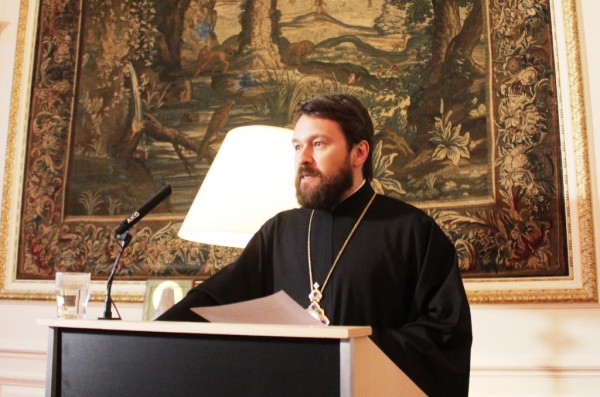
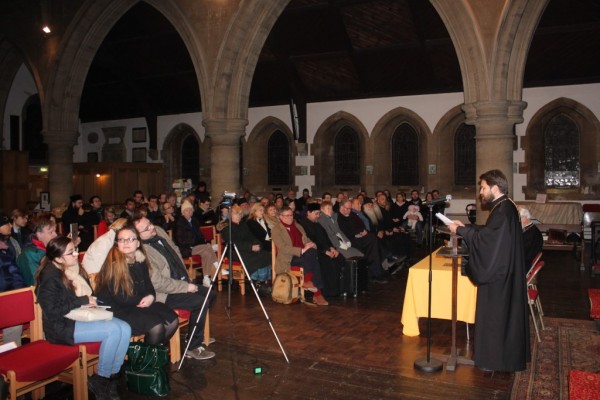
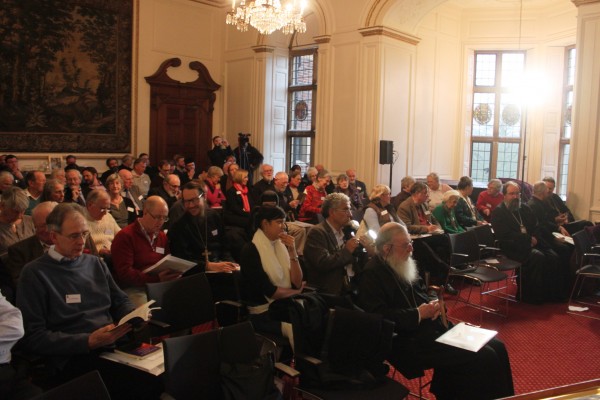
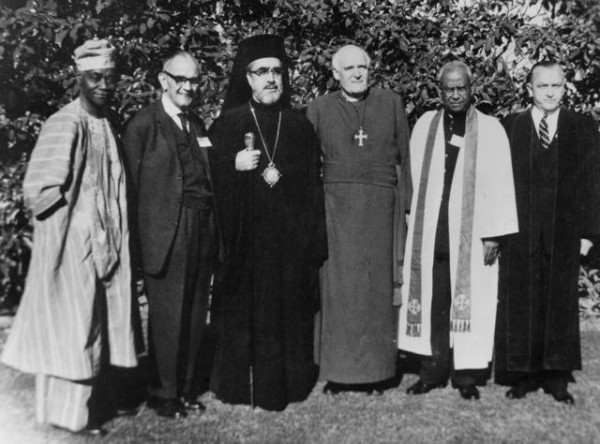

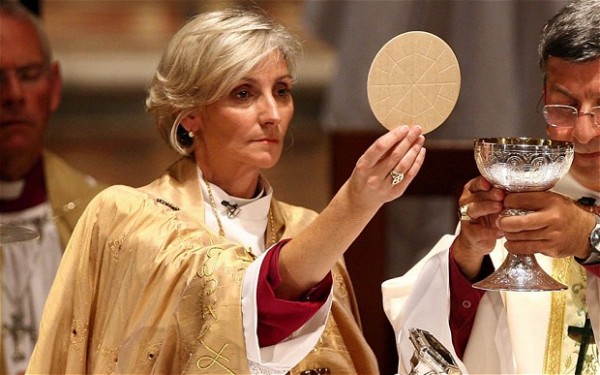
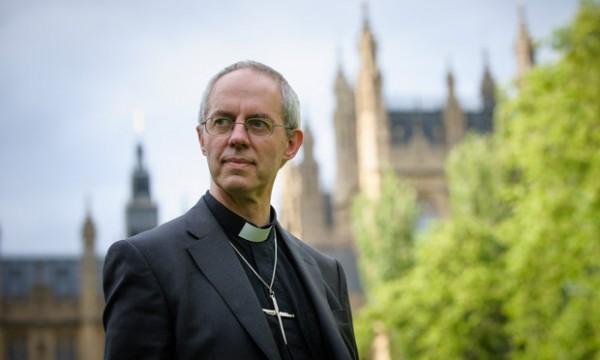
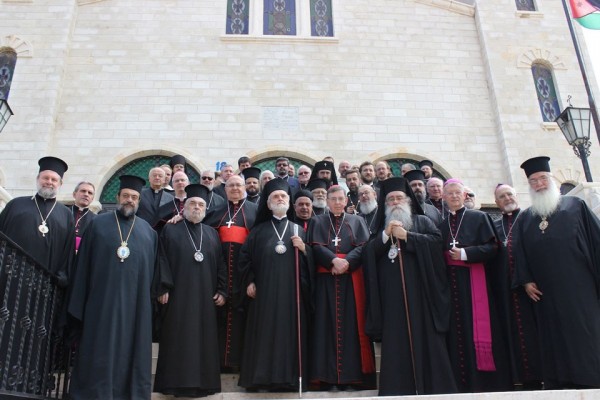
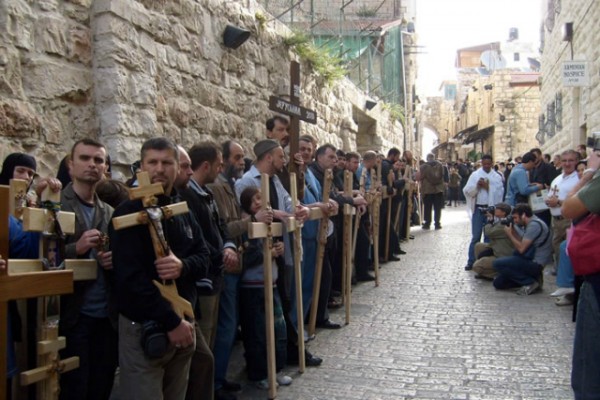
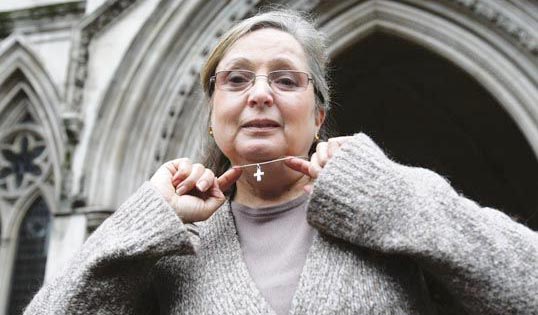









No comments:
Post a Comment